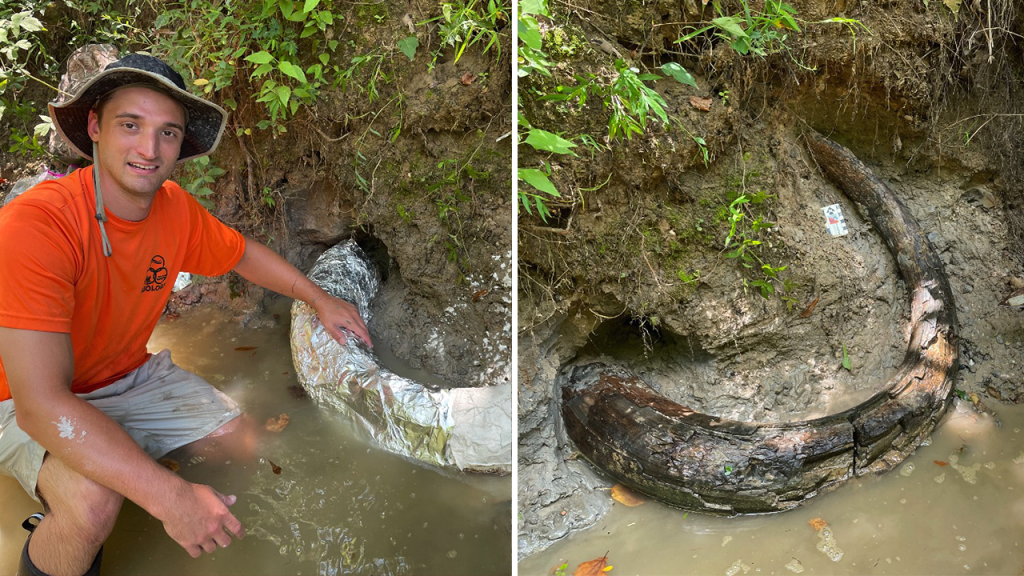An artifact and fossil collector, Eddie Templeton, recently made a significant discovery in Madison County, Mississippi when he came across a portion of an Ice Age-era Columbian mammoth tusk exposed in a steep embankment. Templeton alerted the Mississippi Department of Environmental Quality (MDEQ), leading to a collaboration between DEQ’s Mississippi State Geological Survey scientists and the Mississippi Museum of Natural Science to properly excavate and stabilize the tusk. After spending an entire day cleaning the tusk, it was confirmed that it belonged to a mammoth, making it a rare find in the area. Columbian mammoths were larger than wooly mammoths and played an important role in maintaining the ecosystem of the area during the last ice age.
Mississippi was home to three Proboscideans during the last ice age: Mastodon, Gomphothere, and the Columbian mammoth, all of which possessed ivory tusks. Mastodons were the most common finds in Mississippi due to their browsing habits and adaptability to different environments. The mammoth tusk discovered by Templeton and the team offers a unique insight into the prehistoric creatures that once roamed Madison County, along with other extinct species like giant bison, sloths, tortoises, and tapirs. Scientists created a plaster jacket for the fossil to learn more about the animal and its environment, determining that the mammoth likely died nearby and its remains were carried along the stream’s channel. The discovery provides valuable information about the ancient ecosystems of central Mississippi during the ice age.
The confirmation that the tusk belonged to a Columbian mammoth was a significant find, as these massive creatures were larger than their wooly mammoth relatives and played a crucial role in maintaining the prairie ecosystem. The tusk, measuring 7 feet in length, was carefully excavated and stabilized by a team of experts, allowing for further study and analysis. The discovery offers a rare glimpse into the prehistoric past of Madison County and sheds light on the diverse range of species that once inhabited the area. The fossil’s location against an ancient sandbar of a stream suggests that the mammoth likely died nearby and was carried along by a flooding event, eventually becoming entombed in alluvium.
The collaboration between Eddie Templeton, the MDEQ, and the Mississippi Museum of Natural Science led to the successful excavation and stabilization of the mammoth tusk, providing valuable insights into the ancient history of central Mississippi. The discovery of the tusk offers a unique opportunity to study the ecosystem of the area during the last ice age, as well as the role that Columbian mammoths played in maintaining the prairie environment. The rarity of the find highlights the importance of protecting and preserving such artifacts and fossils for future generations to learn from and appreciate. Templeton’s discovery has opened a window into the past, allowing researchers to piece together the puzzle of the region’s prehistoric inhabitants and the events that shaped their existence.


